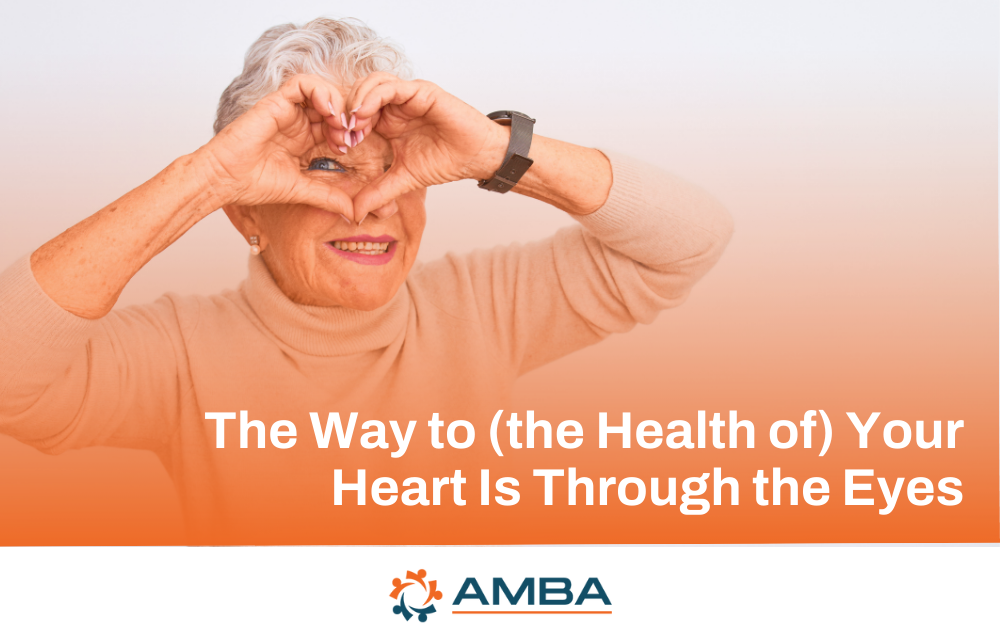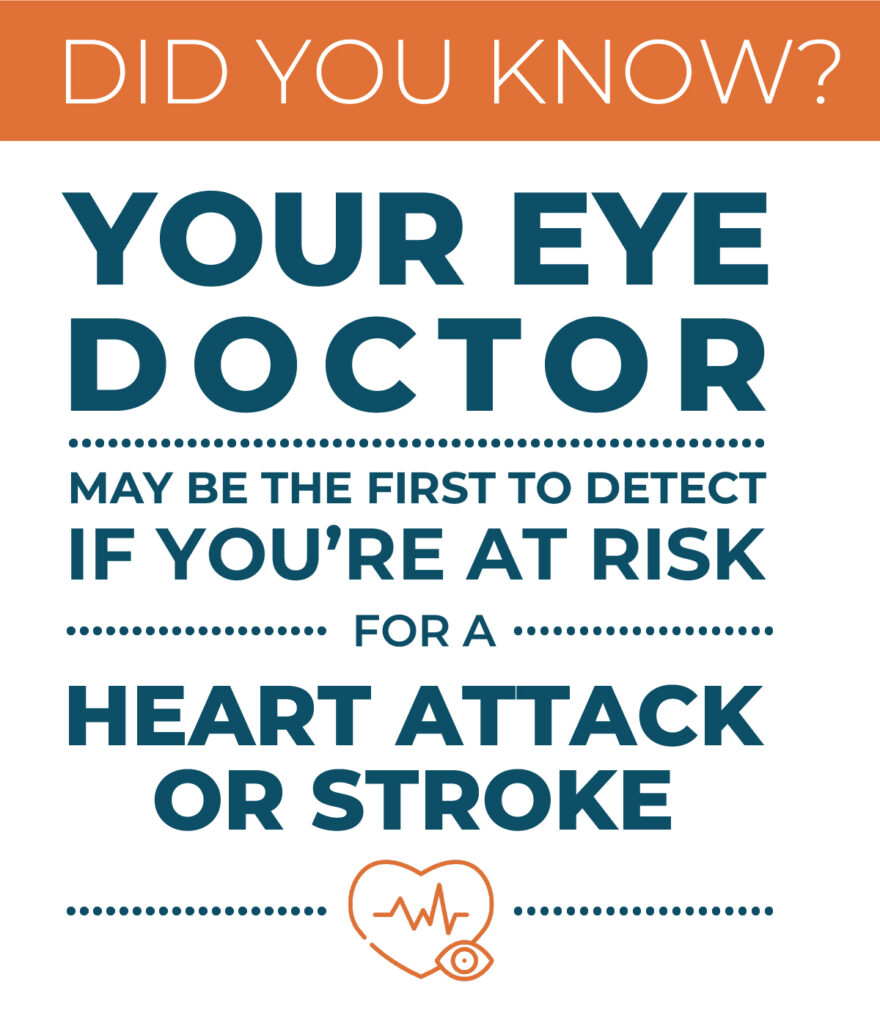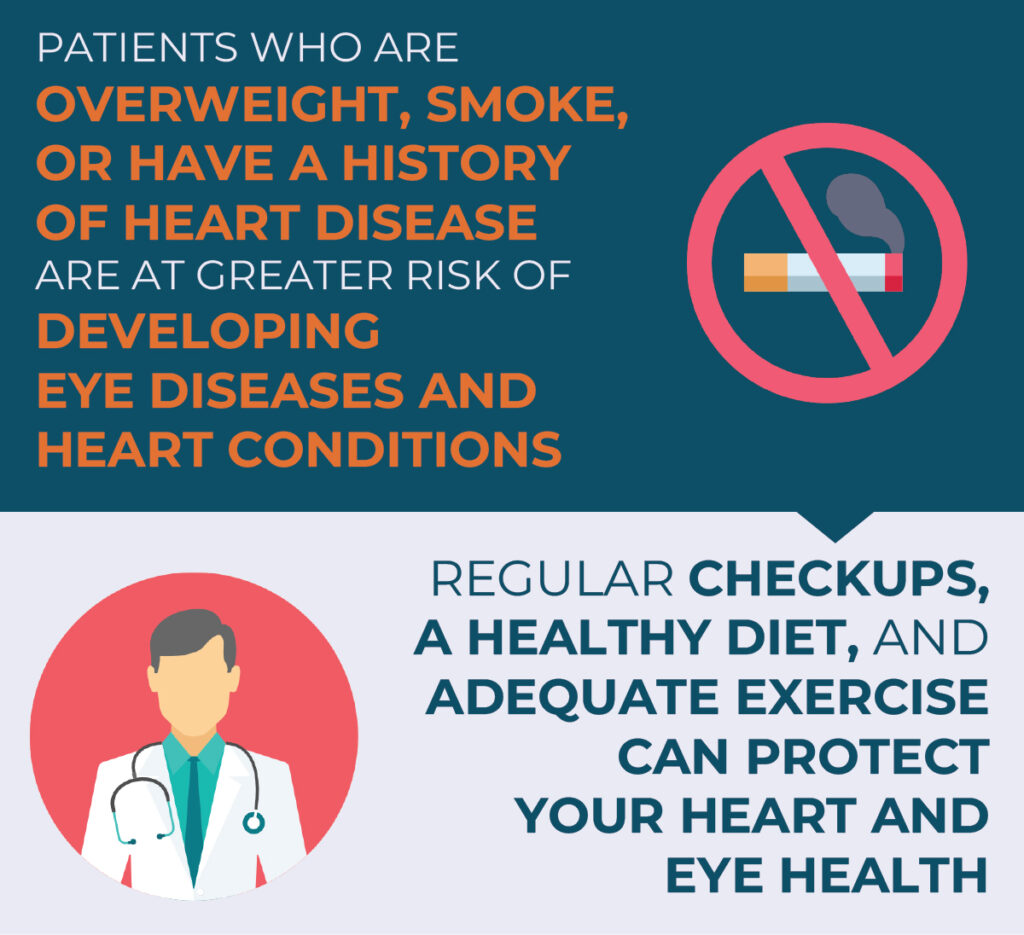
Maintaining healthy vision is important. That’s why AMBA offers a Vision Plan that provides comprehensive coverage at a reasonable rate. AMBA also wants you to better understand the importance of your eyes concerning your overall health. For example, how your vision can reveal potentially serious heart problems.
Your eyes aren’t just the window to the soul—they also can reveal a lot about your heart. Vision and heart health are more connected than you might realize. Detecting early warning signs during a routine eye exam can provide important clues about potential heart issues.

High Blood Pressure
Hypertension, more commonly known as high blood pressure, is when blood pressure is consistently higher than it should be. Hypertension can lead to a stroke or a heart attack.
High blood pressure can put pressure on the eye’s blood vessels and cause damage including blood clots, bleeding in the eye, blurry vision, and even blindness.
Your eye doctor can detect some telltale signs of hypertension. These include:
- Damaged arteries in the eyes.
- Arteries in the eyes are unusually smaller than the veins.
- Swelling in the eyes. High blood pressure can cause the retina’s arteries to stiffen. This can lead to bulging (swelling) in the eye when pressed against a blood vessel.
Blood Clots
Eye doctors can detect a blocked artery during a routine eye exam. Arterial embolisms, the medical term for a blood clot blocking an artery, are serious, especially if it’s in the carotid artery. Even a small blood clot can cause blindness, tissue damage, stroke, and death.
Your eyes can also reveal evidence of ischemia, a condition in which blood flow and oxygen are restricted or reduced in a part of the body. In the instance of ocular ischemia, the interruption of blood flow causes the cells in the retina to die. When retinal cells die, they leave behind visible damage called retinal ischemic perivascular lesions (RIPLs). Researchers discovered that people with cardiovascular disease had more of these lesions. RIPLs may soon become the standard method to identify cardiovascular disease and a patient’s risk for a heart attack or a stroke.
Diabetes
Diabetes has damaging effects throughout the body, including on the eyes. As the disease progresses, common symptoms can include cataracts, worsening vision, and even blindness.
Patients may show no symptoms of diabetes and can even have perfect vision. However, an eye doctor can find signs during a routine eye exam. For example, in 2017, optometrists discovered over 400,000 cases of diabetic retinopathy in patients who hadn’t even been diagnosed with diabetes! In many cases, a routine eye exam helped patients take proactive measures to save their vision and avoid potential blindness.
Diabetes can also lead to a heart attack or other types of heart disease. But if caught early enough, your eye doctor can help you prevent potential life-threatening cardiac issues. Just think of it: a routine eye exam could save your vision and your life.

Want to keep your heart healthy? Then get a checkup with your eye doctor. The Vision Plan from NCRGEA and AMBA covers annual WellVision exams. The plan also provides 100% coverage for most lenses, even progressives, and thousands of nationwide in-network providers. Sign up today – acceptance is GUARANTEED! – at www.AMBAdentalvision.com/NCRGEA or call 800-956-1228.
Source: https://eyewiki.aao.org/Ocular_Ischemic_Syndromehttps://www.aoa.org/news/clinical-eye-care/diseases-and-conditions/real-partners-in-diabetes-care?sso=y


